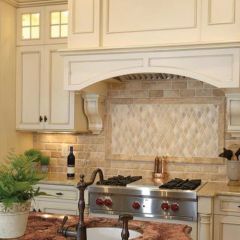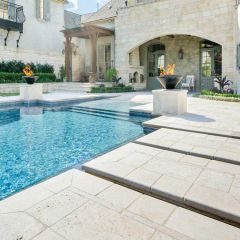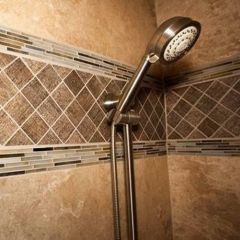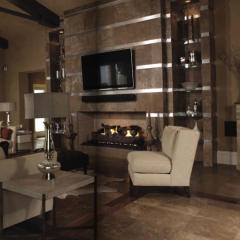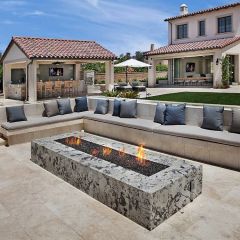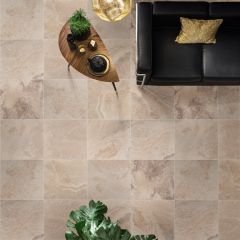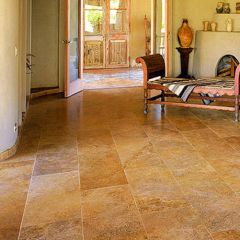Travertine
Travertine
Travertine is a kind of sedimentary stone. Like marble, travertine is a form of limestone. When limestone is put under a lot of pressure for a long time (thousands of years), it can turn into travertine, the way peat turns into coal. If the travertine is left under pressure for thousands more years, it can turn into marble, the way coal can turn into diamonds. So travertine is a kind of stone that is about halfway in between limestone and marble. It’s finer than limestone, but not as fine as marble.
Travertine's range in hardness from 4-5 on the ten-point MOHS scale (diamonds are 10; granites are ±7), making it perfect for most areas of the home. Care does need to be taken, however when choosing material for a high-traffic area or kitchen countertops which might be subject to etching substances. Like any stone, travertine should be sealed with a penetrating sealer to prevent stains from penetrating into the stone.
Travertine is a sedimentary rock that begins as limestone. Over time, geological shifting forces the limestone deep within the earth. The porous nature of limestone makes it a great liquid reservoir. Limestone absorbs water from aquifers, which are enormous underground pools formed by ice age melting. Heated by the earth’s inner core, the water rises as steam, forming hot springs and geysers. This hot water dissolves the limestone and brings it to the surface along with other granules from below. If enough time transpires, mud beds consisting of limestone and other minerals cool and crystallize into solid travertine. The cooling process results in the extraordinary small holes or cavities while minerals in the stone create unique variations in color and veining.
Types of Travertine
Unfilled: Travertine with naturally occurring holes.
Filled: Travertine with its naturally occurring holes filled with a mixture of a hardener and dust obtained from the cutting and honing process.
Polished: During production, a facet is put on each crystal at a microscopic level – much as a jeweler would facet a diamond. The resultant smooth surface allows light to refract in and out of the stone in a parallel way. This enhances the visible sheen and gives the appearance of depth.
Honed: A smooth, non-reflective finish achieved by grinding the surface.
Saw Cut: The untreated surface of a stone when it is first cut. The surface is slightly rough.
Tumbled: An antique look achieved by rounded corners and edges.

